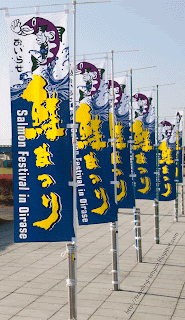500 Buddhist Disciplines (Go Hyaku Rakan)
Buddhist statues, each with a different facial expression, line the inside of Ho’onji Temple in the temple district of Kitayama. Visitors may enter the temple daily from 09:00 to 16:00 after paying the admission of ¥300. These wooden, varnished statues displayed at Ho’onji Temple are considered magnificent example of Japanese art, which were made between 1731 and 1735 by nine Buddhist image sculptors from Kyoto. The number “500” is not literal but a figure of speech meaning “many.” There are actually 499 lacquered wooden statues, each with a different expression and pose. Among them, try to find statues of Marco Polo and Kublai Khan.


We arrived here 10 minutes before closing on an overcast day. The room was dimly lit and we didn’t get the chance to look closely at the different faces. I think this is worth seeing because it is different from all the other big Buddha temples I’ve seen. Most tourists will probably need 30 minutes maximum to observe the different countenances on the statues. The small temple grounds don’t offer much else to see. Children will most likely be bored at this location.








Demon’s Handprints
Across from Hoonji Temple is a small sign that points to the Demon’s Handprints and gives the impression that it is nearby. After following an extremely narrow, winding, neighborhood road, we arrived at our destination. I wouldn’t suggest going here if you are pressed for time because there are better things to do.

Mitsuishi and the Demon’s Handprints
According to legend, a demon named Rasetsu lived in the area and would trouble and scare local villagers and travelers. So the people prayed to the local god Mitsuishi to eject Rasetsu from their village. Mitsuishi defeated and bound Rasetsu to three rocks. Upon being released, Rasetsu placed his handprints on one of the three rocks as a promise never to torment the villagers again. To celebrate ejecting the demon, the villagers expressed their gratitude to Mitsuishi by dancing, hence, the origin of the “Sansa Dance”. Mitsuishi means “three rocks” and Iwate means “rock hand”.

AEON Mall Morioka
Morioka City contains two AEON Malls, one in Morioka City and the other in Morioka-minami. AEON Mall Morioka is two minutes off the toll road’s exit 42. It gives passengers a nice break from the long drive. Visitors can relax, stretch their legs, and grab something to eat. Other well-known stores include GAP, Starbucks, McDonald’s, Kentucky Fried Chicken, Baskin Robbins 31 Ice Cream, etc.
AEON Mall Morioka
4-7-1 Maegata, Morioka City
Open every day: 10:00-22:00
JUSCO: 9:00-23:00
http://morioka-aeonmall.com/shopguide/floorguide.jsp

Parc Avenue Kawatoku
1-10-1 Saien, Morioka City
Hours: 10:00-19:00
- Get on Falcon Road and go toward the Michinoku Toll Road
- Go through the toll booth, pay ¥200, take your ticket, and follow the signs to Morioka (about 2-2.5 hours)
- Take Exit 42 Morioka IC, follow the loop, and turn left onto Route 46
** The toll sign posted ¥3600 ONE WAY from Misawa to Morioka, but we were only charged ¥1500. This may have been a special promotion or discount. Bring plenty of yen.
AEON Mall Morioka
On your left side once you exit the toll road and are on Route 46
500 Buddhist Disciplines
- From AEON Mall, take a left onto Route 46
- Continue driving through the Iwate University area
- Turn right onto Route 4 when the road comes to a T-intersection
- Turn left at the traffic light titled 455 Kitayama Entrance
- Make a right at the next T-intersection (the sign pointing to the right reads 455 Morioka Station and the sign pointing to the left reads 455 Iwaizumi)
- Cross over the railroad tracks
- Turn left at the traffic light names Kitayama Koban
- Make the first left
- Turn immediately left into the small parking area
The Northern Tohoku Tourist Information Centre is located in the waiting room on the 2nd floor (close to the Shinkansen south ticket gate) of Morioka Station. This centre is designated by the International Tourism Promotion Association), and English language assistance is available.
Telephone: 019-625-2090
Hours: 9:00~17:30





































